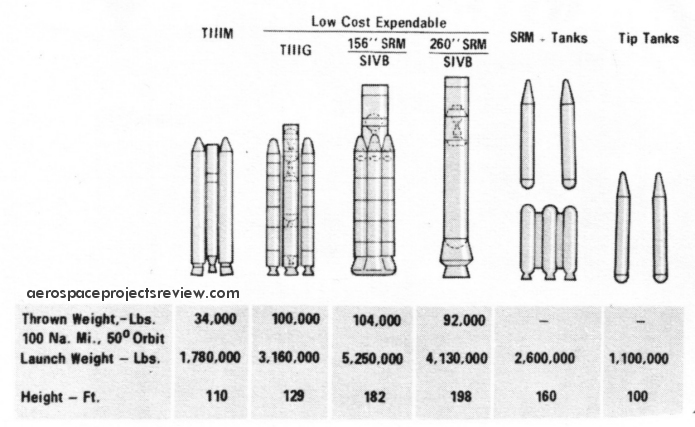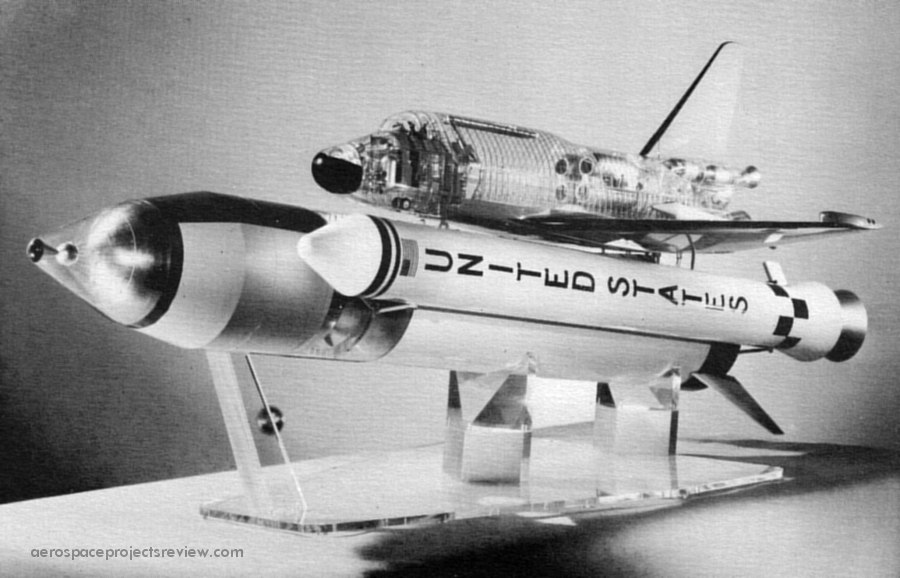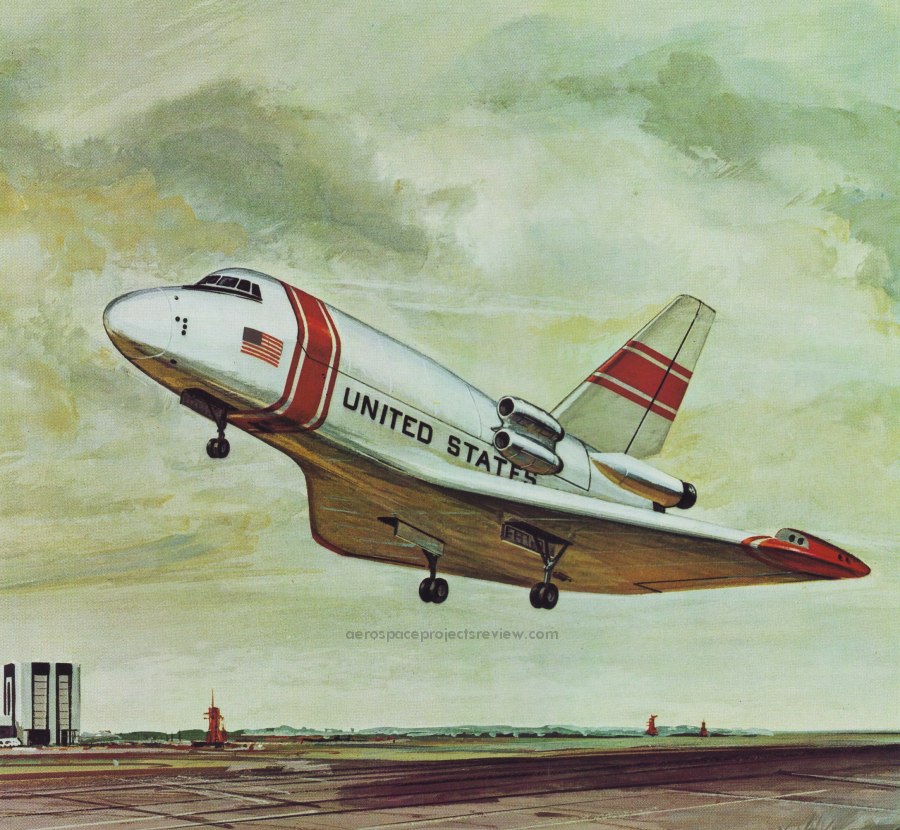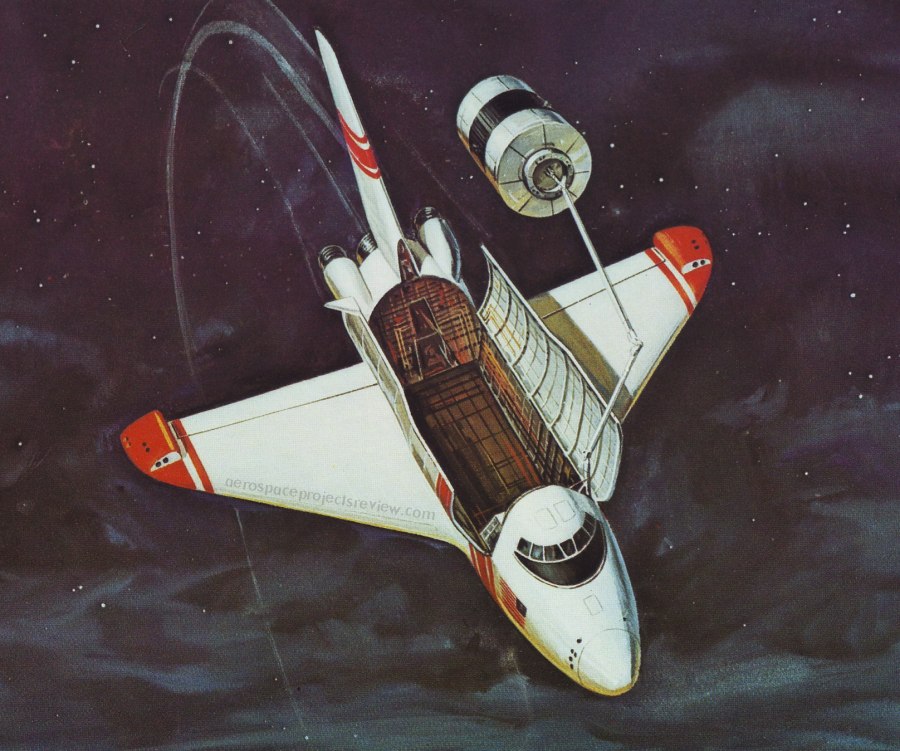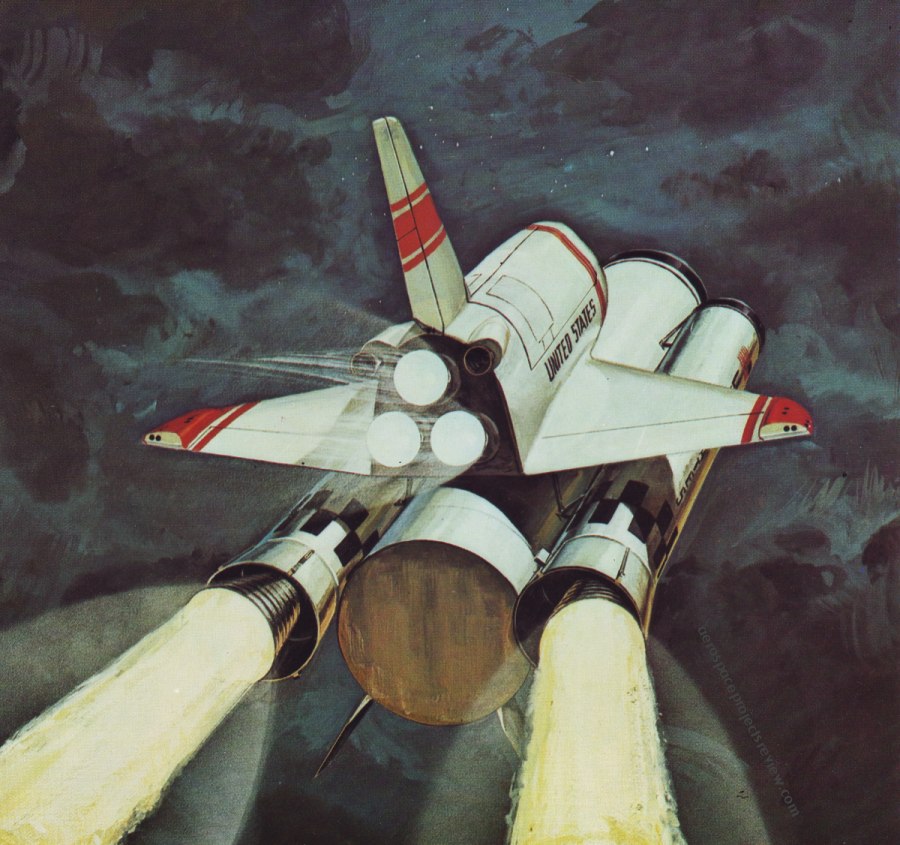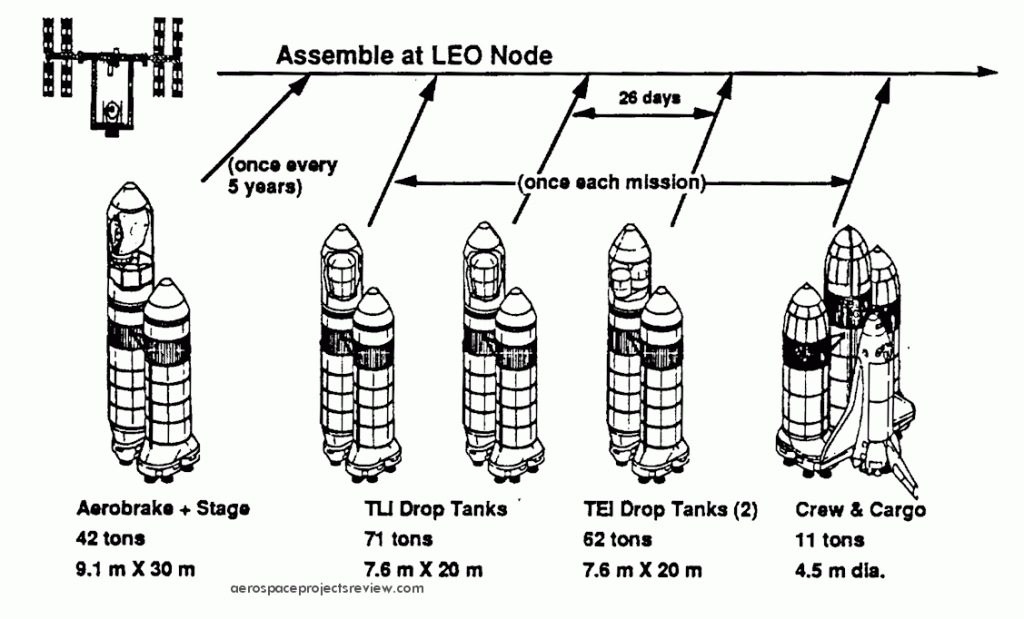Proposal artwork depicting the interior structure of the Design 619 space shuttle concept. Note that the airlock, used for docking to space stations and the like, is in the nose.
Search Results : shuttle
A little-known and poorly-documented proposed variant of the Titan family of launch vehicles, the Titan IIIG used an increased-diameter core with 156-inch diameter solid rocket boosters. The late-1960’s Titan IIIG would have been capable of launching 100,000 pounds, and seems to have been focused on USAF missions. McDonnell Douglas appears to have considered it for use in launching the Big Gemini logistics capsule. Beyond that, not much is known. The McD illustration below is one of the few I’ve come across, and does not seem likely to be terribly accurate. Also depicted here are the Titan IIIM, a launch vehicle composed of a cluster of four 156-inch solids topped by an S-IVb stage (a McD product), a 260-inch solid topped by an S-IVb, and external tank arrangements for reusable launch vehicles such as the ILRV (integral Launch and Recovery Vehicle), a predecessor to the Space Shuttle. McD’s entry to the ILRV study was a derivative of their generic Model 176 concept.
In the late 1960s, prior to the Shuttle concept really taking off, the USAF funded studies of low cost boosters. One type that received considerable study was a two-stage pressure fed layout. This was vaguely similar to the earlier Aerojet Sea Dragon in that it would be a heavy and simple design, using shiplike construction and dense propellants. The nature of the first stage booster was such that recovery was anticipated. Propellants were hydrazine and nitric acid.
An illustration of Grumman’s 619 Space Shuttle – the final competitor for the competition that North American Rockwell won – lifting off. This design from 1972 was laid out pretty much as the final Space Transportation System was, but with some notable differences:
1) Stabilizing fins on the external tank
2) A “humped” back
3) four turbojet engines could be stored in the rear of the cargo bay, used for landing range extension, go-around capability and self-ferrying
4) Smaller OMS pods
5) Separate reaction control pods on the wingtips
One pre-Shuttle idea for a space logistics vehicle was the “Big Gemini.” This would have used portions of the Gemini re-entry capsule as the nucleus around which a much large conical capsule would be built. The adapter section would be done away with and replaced with a conical section (with a geometry matching and extending the Gemini capsules) to house a variable number of passengers. A large number of “Big G” configurations were put forward; generally these were to be launched atop the Saturn Ib, but Saturn V and Titan IIIc options were also studied.
No, the project hasn’t been forgotten. Work continues; if you compare the surface detailing to earlier examples, you can see that a *lot* has happened.
Also note a change in “scale reference” lineup. The Space Shuttle is gone as is the Titan III. In their place is a 747 with stretched upper deck and a “Boeing 2717 SST.” These drawings are to show the state of SSV as of 1999… in the “2001” timeline. Consequently, scale references should be appropriate for that timeline. The shuttle probably wouldn’t have been built; if it had, it would have been retired long before 1999. My presumption is that the Boeing 2707 SST would have been built and become operational by the late 70’s, and would have been replaced with the 2717 sometime in the early/mid 90’s. Also shown is an incomplete Soviet Titov V spaceplane, an incomplete USS Discovery and the “Neptune” booster, which I’ve taken to be a 2 Mlb-payload version of the Convair Nexus. Saturn V included; even though it would have been long since retired, it would be historically important. Especially since it launched Space Station I.
In 1993 Boeing designed a modular heavy lift launch vehicle for a range of space launch missions. The core vehicle was based on Shuttle External Tank components, with a multitude of SSME’s at the rear (in two recoverable pods). Shown here are some basic launchers built from these components, being used to launch parts for a lunar mission into Earth orbit. The Shuttle is shown with the solid rocket boosters replaced with the new core vehicles.

